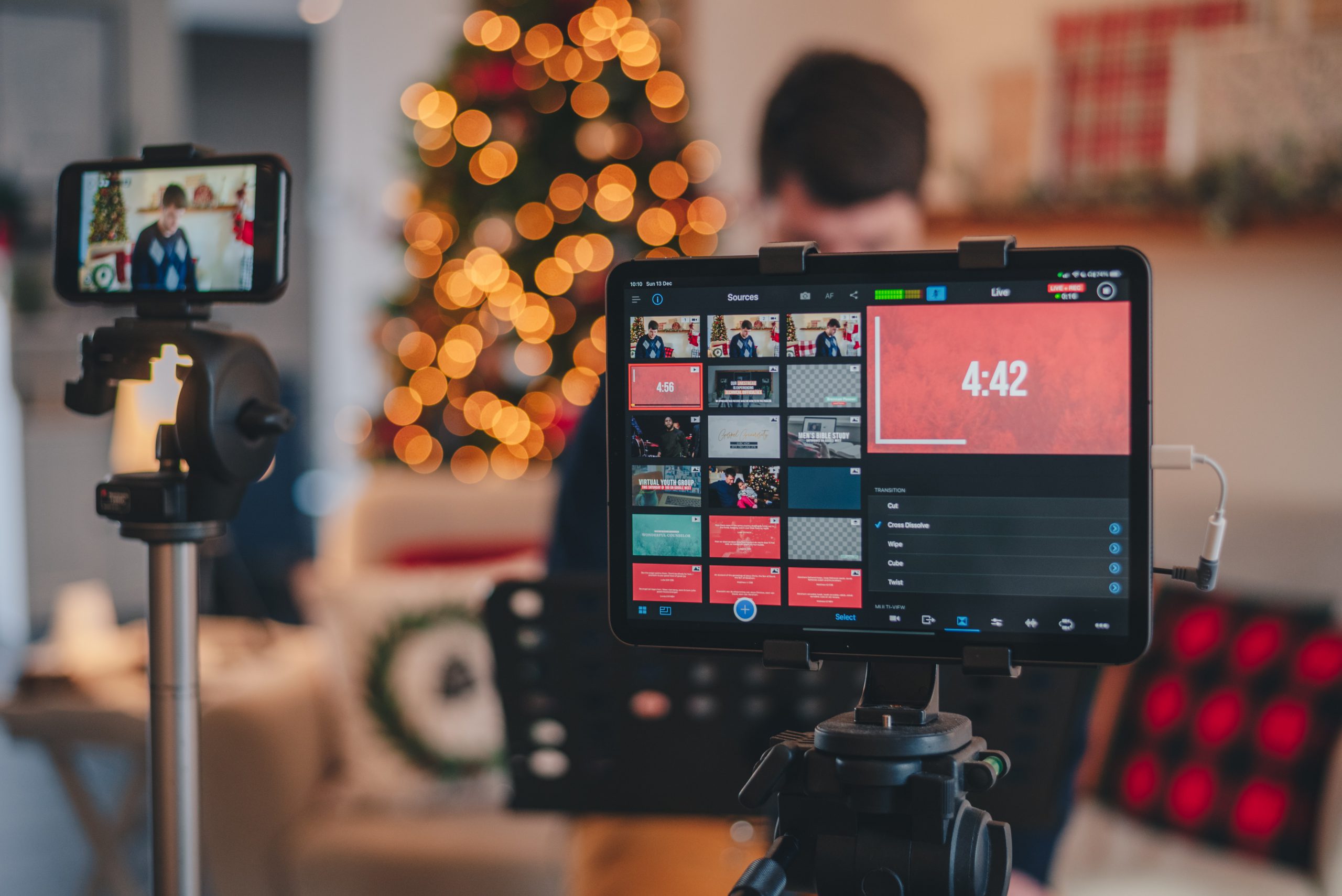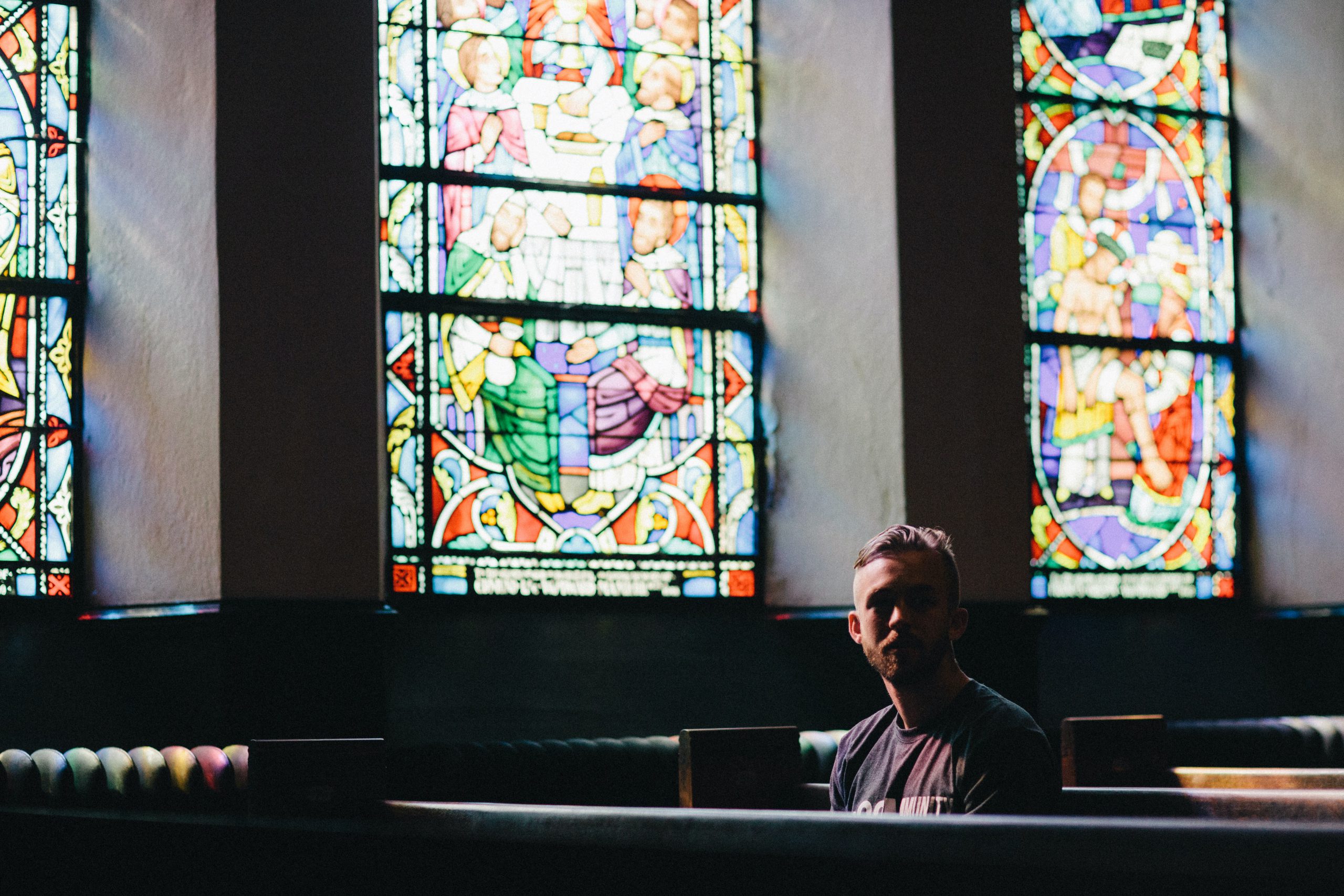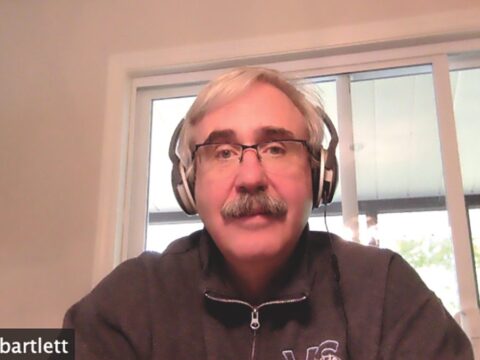Rev. Andria Irwin is the digital minister for Highlands United in Vancouver and helps congregations create great digital ministries with Pacific Mountain Region’s United Online. Her book Following: Embodied Discipleship in a Digital Age came out in August.
Christopher White: What led you to write the book, and what do you hope that people get out of it?
You may unsubscribe from any of our newsletters at any time.
Andria Irwin: Following was written as a response to a discussion that I and my co-author, Rev. Jason Byassee, heard was happening at the time in the wider church: is the internet still important? The two of us have very different opinions on how the church can and should use technology, but one thing we agree on is that it isn’t something the church should avoid. As a digital native, I wanted the church to enter into a conversation around how we live faithful lives in a virtual space. Jason wanted to look at how some of our ancient practices could inform our approach to digital life. The internet isn’t just an option or the next best thing — for many people, it’s the only thing.
CW: How did you get started in digital ministry?
AI: I did my undergraduate degree in communications and took several jobs in my early 20s in that field, along with being an early adopter of blogging. I learned first-hand that not only was the internet filled with hungry and curious people, but it was a place where they all came together, searching for meaning and connection. I didn’t see anyone in my faith communities talking about that, or how much value the Christian story might bring to the space.
Five years ago, I started researching what effective digital ministry could look like. The United churches that were doing it at the time offered what I called “pyjama church”: you only watched it when you were sick or on holiday. You were just a spectator; you weren’t integrated into the experience.
I received a grant to create United Online. We exist to help equip, resource and encourage communities in their exploration of what authentic online ministry might look like for them. I was constantly trying to convince churches to create a vibrant online presence, but I kept hitting a wall. People were reluctant to invest fully. Then COVID-19 happened, and everything changed. Churches all across the country immediately switched into digital mode.
View this post on Instagram
CW: And they had to quickly learn how to do ministry online. Are there any common mistakes people make?
AI: You should never assume that the ministry is going to run itself just because the tech is working — you need people present online to welcome and connect with people. Do not consider your online and in-person people as separate communities. Work hard at integrating them. You are one church; people are just coming to you in different ways.
It is also important not to compare your ministry with the one down the street. I spoke to a minister in Tacoma, Wash., who asked his people what they needed during the COVID-19 shutdown. Much to his surprise, he discovered it was distilled water. He had a lot of elderly people who needed CPAP machines to sleep, and they need distilled water to clean them. So members of the congregation signed up online to purchase and deliver this water. That’s an online ministry, too, and it’s just as important as an online worship experience.
More on Broadview:
- I left my church in Calgary for virtual worship at this B.C. United church
- ‘We’re really happy to have him:’ This minister took on a 2nd congregation 2,000 km away
- How churches rallied in a pandemic
CW: Churches are now in a place where they’re imagining what their post-COVID ministry will look like, and many will decide to offer a hybrid of online and in-person ministry. What do you think this is going to look like?
AI: It’s going to look different in every community; it’s going to require energy, and it will continue to be about building relationships. I think there will be more attention paid to what I call the aesthetics of digital production, like camera angles, lighting and the use of multiple cameras. Churches will continue to develop that and increase their use of tech to support it.
One of the big challenges will be to those congregations that have been using Zoom throughout the pandemic. Zoom won’t work to create engaging hybrid worship in the long term, because it limits participants and doesn’t transmit music well. Something as low-tech as an iPhone and online switcher software can be run with much the same person-power as Zoom and will enable greater flexibility. This would allow churches to stream to YouTube or Facebook Live, which can connect to a wider audience.
Communities of faith should start having conversations now about what they have enjoyed the most about digital worship during the pandemic and what made worship meaningful for them. Make sure to talk to those who have only ever joined online, too. What have their favourite memories of the past year and a half been? Then curate those and keep doing what people valued.

CW: What do you say to people who just want to have in-person worship, so things will go “back to normal”?
AI: That is going to happen, and I think that there are a couple of steps churches need to take. The first is to acknowledge the loss we have experienced during this time. Having done that, you also should acknowledge the people we have gained through this, and the capacity we have all developed to change quickly and live a life of discomfort.
Both in-person and online have their place, and both can reach different groups of people. For example, for people with social anxiety and those with differing abilities, the digital church is a huge gift and is among the reasons it needs to be supported. People are afraid that they will lose the in-person, but it is not either/or. Rather, it is both/and.
CW: Do you see a time when digital ministry will become the primary focus, and in-person secondary?
AI: Digital ministry does not negate the need to be together. What is important is that something transformational happens, either in person or online, that sends us out into the world to experience embodied relationships.
I see digital ministry as just one of the doors that people can use to connect to us. But for demographics that are missing from our churches — those in their late teens, young adults and people of all generations who may have drifted away or have spiritual questions — this could very well be the front door for them. These people already live hybrid lives between in-person and online. They are equally comfortable in both places. So they may explore the digital ministry of a church to determine what church they will attend in person.
People are afraid that they will lose the in-person, but it is not either/or. Rather, it is both/and.
CW: As a denomination, the United Church is very neighbourhood-based. Is digital ministry changing this?
AI: I’ve been thinking about this a lot, because I believe that COVID-19 has shown us that geography simply doesn’t matter anymore. I think this is a very positive development, as we now have a big opportunity before us to reclaim ourselves as a national church. My neighbour now can be in Prince George, B.C., or Edmonton or rural New Brunswick. Congregations are already linking together to use each other as online pulpit supply, share resources or even integrate their online worship.
What could it mean for a denomination in statistical decline to rid itself of geographic competition and focus on meeting the spiritual and missional needs of the whole country? This could be really liberating. We could become a church that focuses on “us for them,” not “us versus them,” as in trying to be better than the church down the road. Let’s connect nationally in a new way.

CW: What makes for a good digital ministry?
AI: The most important part is authenticity. Would the feeling I get walking through your doors on a Sunday morning be the same feeling I would get going into a digital service? If not, there is work to be done to bring the two experiences in line with one another. It is important that people are seen and welcomed online, just as they are in person.
It’s also important to remember that digital ministry isn’t only performative — it’s also about connection. Make sure that in each of your offerings there is a host who welcomes people, and asks and answers questions. Create online events. In everything you offer, build connections with your online community. If a digital ministry is to succeed, there needs to be the opportunity to build real relationships online.
***
Rev. Christopher White is a minister at Kedron United in Oshawa, Ont.
This interview first appeared in the September 2021 issue of Broadview with the title “Church on a screen.” It has been edited and condensed for length and clarity.














